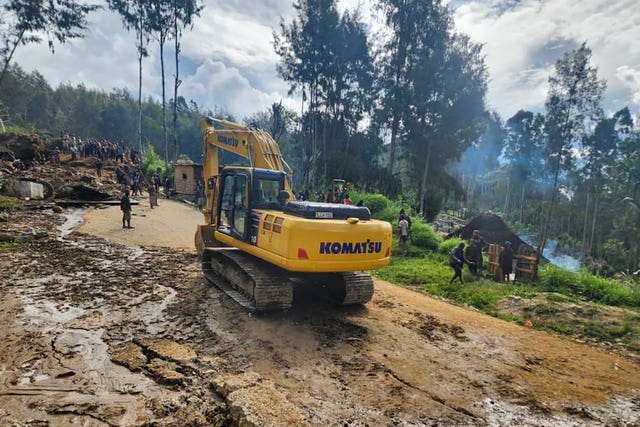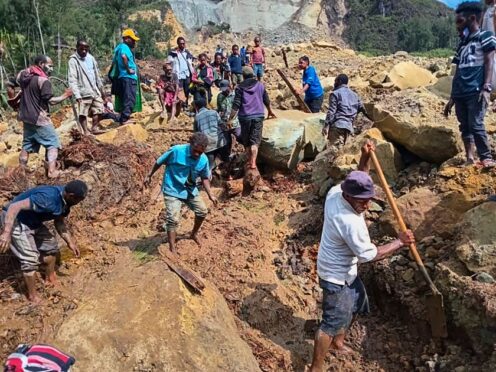Australia prepared on Monday to send aircraft and other equipment to help at the site of a deadly landslide in Papua New Guinea.
However, poor weather and overnight rains in the South Pacific nation’s mountainous region have sparked new fears that the tons of rubble that buried hundreds of villagers could soon become dangerously unstable.
Australian defence minister Richard Marles said officials have been talking with their Papua New Guinea counterparts since the mountainside collapsed on Yambali village in Enga province on Friday.
The United Nations estimates the natural disaster has killed 670 people, with the remains of only six recovered so far.
“The exact nature of the support that we do provide will play out over the coming days,” Mr Marles told the ABC.

“We’ve got obviously airlift capacity to get people there. There may be other equipment that we can bring to bear in terms of the search and rescue and all of that we are talking through with PNG right now,” he added.
Papua New Guinea is Australia’s nearest neighbour, and the countries are developing closer defence ties as part of an Australian effort to counter China’s growing influence in the region.
Australia is also the most generous provider of foreign aid to its former colony, which became independent in 1975.
Heavy rain fell for two hours overnight in the provincial capital of Wabag, 35 miles from the devastated village. A weather report was not immediately available from Yambali, where communications are limited.
However, emergency responders were concerned about the impact of rain on the already unstable mass of debris lying six to eight metres deep over an area the size of three to four American football fields.
An excavator donated by a local builder on Sunday became the first piece of heavy earth-moving machinery brought in to help villagers who have been digging with shovels and farming tools to find bodies.
Working around the still-shifting debris remains treacherous.
Serhan Aktoprak, the chief of the International Organisation for Migration’s mission in Papua New Guinea, said water was seeping between the debris and the earth below, increasing the risk of a further landslide.
He did not expect to learn the weather conditions at Yambali until Monday afternoon.
“What really worries me personally very much is the weather, weather, weather,” he said. “Because the land is still sliding. Rocks are falling,” he added.
Papua New Guinean defence minister Billy Joseph and the government’s National Disaster Centre director Laso Mana flew into the area on Sunday in an Australian military helicopter from the capital of Port Moresby.
The distance to Yambali is 370 miles to the northwest.
Mr Mana’s office posted a photo of him at Yambali handing a local official a check for 500,000 kina (£102,000) to buy emergency supplies for the 4,000 displaced survivors.
The visit’s purpose was to decide whether Papua New Guinea’s government should officially request more international support.
Earth-moving equipment used by Papua New Guinea’s military was transported to the disaster scene, which is 250 miles from the east coast city of Lae.
Traumatised villagers are divided over whether heavy machinery should be allowed to dig up and potentially further damage the bodies of their buried relatives, officials said.
